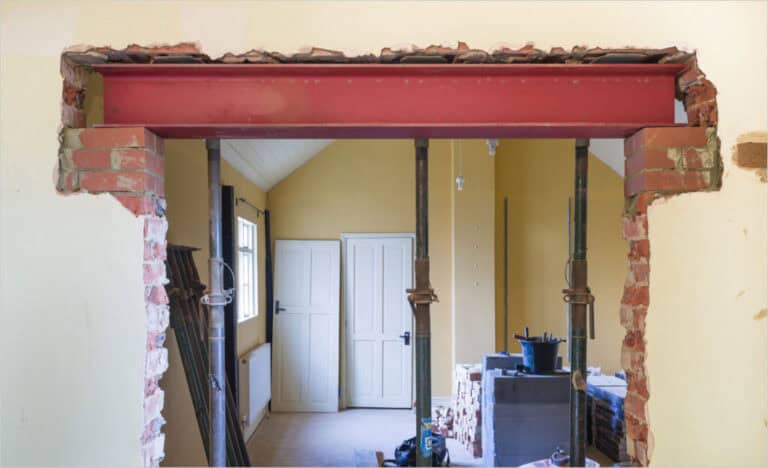A solar canopy generates electricity—yes. But that’s just the beginning.
More than a row of solar panels on steel, a well-designed canopy turns open space into a productive, multi-use asset. It creates shelter, cuts energy costs, supports EV infrastructure, and shows your commitment to sustainability—all without interrupting your daily operations.
Still, many businesses aren’t sure what a solar canopy really does, or whether it fits their site and goals. That’s exactly what this guide is here to answer.
In the sections below, we’ll explore what solar canopies actually do, how they deliver value, where they’re used, and what it takes to build one. By the end, you’ll know whether it’s the right move—and how to get it right.
What to Expect in This Blog:
First, A Quick Look: What Is a Solar Canopy?
A solar canopy is a raised steel structure designed to hold solar panels above open spaces—most commonly over parking lots, walkways, or equipment yards. Unlike rooftop solar, it doesn’t need an existing building. It stands on its own, supported by columns or frames, creating a shaded area underneath while generating clean electricity above.
You can think of it as a dual-purpose system. On one hand, it provides shelter from sun, rain, or snow. On the other, it turns underused space into a power-generating asset. For businesses with large outdoor areas, this setup offers a smart way to combine energy production with everyday site functions.
We won’t go deep into the technical details here. If you want a full breakdown of canopy types, components, and how they’re built, check out our separate guide: “What is a Solar Canopy?”
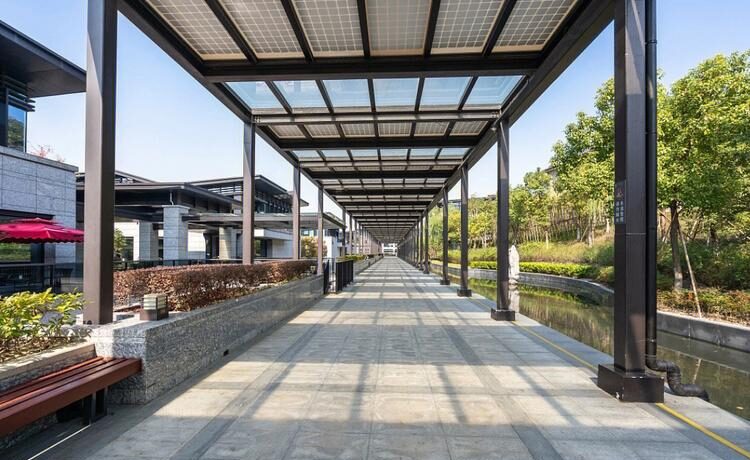
What Does a Solar Canopy Actually Do?
At its core, a solar canopy does one key thing—it generates electricity from sunlight. The solar panels mounted on top absorb solar energy during the day and convert it into usable power. This electricity can be used directly on-site, stored in batteries, or fed into the local grid. For businesses with high daytime energy use, this often means lower utility bills and more control over long-term energy costs.
But that’s only part of the story. A solar canopy also transforms how space is used. Instead of letting parking lots, loading zones, or yard spaces sit idle, it turns them into productive, income-generating assets—without changing their original function. Vehicles can still park underneath, forklifts can still move, and daily operations go on as usual.
Many companies also integrate solar canopies with EV charging stations, especially in office campuses or logistics hubs. The structure not only supports solar panels but also shelters charging points from heat and weather, improving the user experience. Some setups even allow for battery storage underneath, turning the canopy into a compact, self-contained energy hub.
In short, a solar canopy doesn’t just “sit there and generate power.” It plays multiple roles at once: energy producer, space optimizer, and future-ready infrastructure. Whether you’re looking to reduce operating costs, expand EV capacity, or simply make better use of your site, a well-designed solar canopy does more than hold up panels—it holds up your energy strategy.
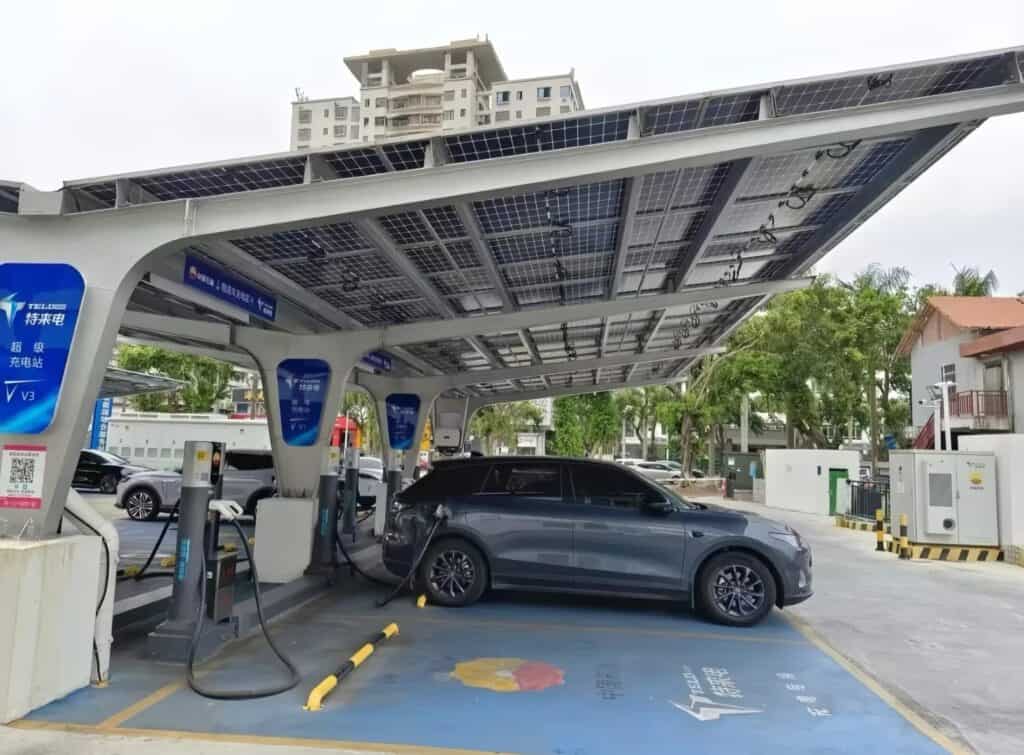
Why Would I Want One? (Key Benefits)
The biggest value of a solar canopy is simple: it turns unused outdoor space into a long-term energy asset. For many businesses, areas like parking lots or loading zones bring no return—they’re necessary, but passive. A solar canopy changes that. It generates clean electricity while providing shelter underneath, without interfering with daily use.
This dual function—power above, protection below—makes it far more efficient than rooftop systems in many cases. Rooftop solar often faces limits with weight, space, or maintenance access. A canopy, on the other hand, gives you more design flexibility. You can size it to match your energy needs, not just your building footprint.
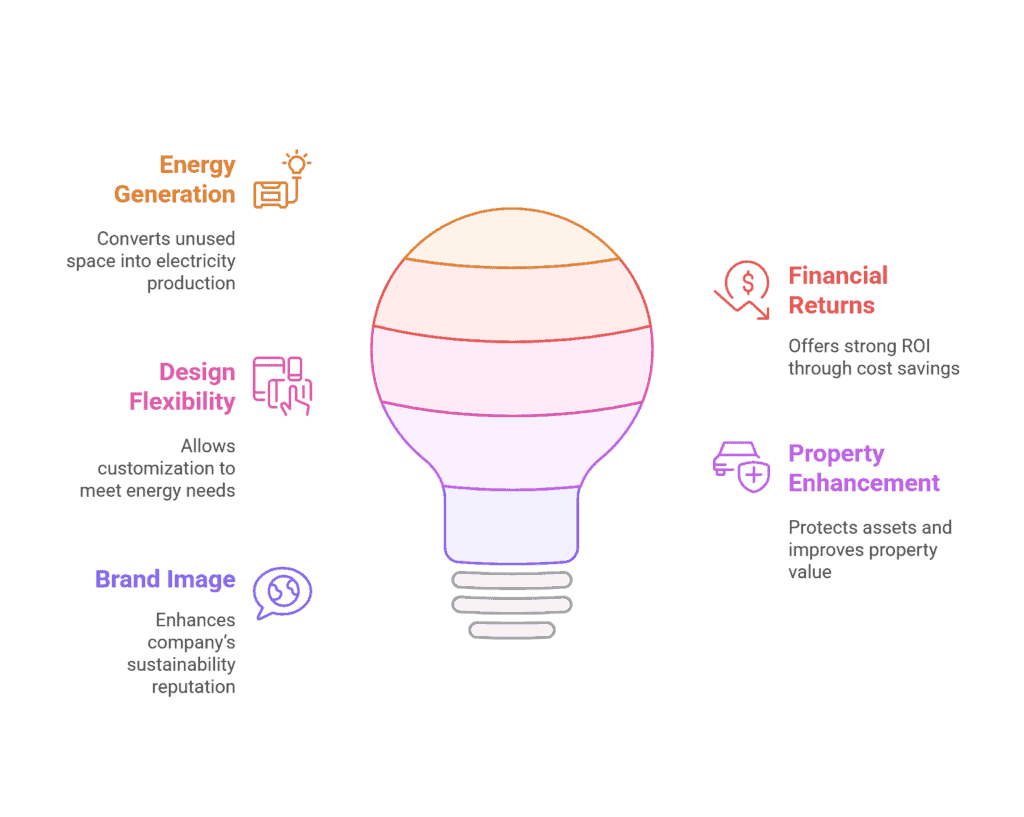
From a financial standpoint, solar canopies often deliver strong returns. In regions with high electricity rates or government incentives, many systems pay for themselves in 5 to 7 years. After that, the power you generate is essentially free—cutting operational costs for years to come. Adding battery storage or net metering options can push the ROI even higher.
But the value doesn’t stop at energy savings. A canopy enhances your property. It protects vehicles, equipment, or people from harsh weather—reducing heat buildup, UV damage, and customer complaints. For sites with high visitor or employee traffic, the shaded, structured space also improves comfort and usability.
There’s also the brand and sustainability factor. A solar canopy is a visible, functional signal of your company’s commitment to clean energy. It supports ESG goals, helps meet green building standards, and shows your clients and team that you invest in future-ready infrastructure—not just for looks, but for long-term impact.
When you combine energy savings, space efficiency, environmental impact, and improved user experience, the case becomes clear: a solar canopy isn’t just an upgrade. It’s a smart business move.
Where Can Solar Canopies Be Used?
Most people think of solar canopies as carports—and for good reason. Parking lots are one of the most common and practical places to install them. Whether it’s for staff, customers, or fleet vehicles, these spaces are wide open, sun-exposed, and often underutilized. A canopy lets you generate power while providing shade and weather protection.
But car parks are just the beginning. Many businesses use solar canopies in logistics yards and loading zones, especially where rooftops are already occupied or not structurally suited for solar. Here, a canopy adds energy capacity without interrupting forklift traffic, deliveries, or equipment movement.
Commercial and public spaces are also ideal. Retail centers, schools, hospitals, and office campuses often have significant outdoor areas where people gather or pass through. Adding a solar canopy not only produces clean energy but also improves comfort and safety—especially in hot or rainy climates.
For facilities planning electric vehicle infrastructure, solar canopies play a double role. They physically support solar panels and shelter EV chargers below, while also signaling a commitment to green mobility. This makes them popular in transport hubs, dealership networks, and growing industrial fleets.
Even in rural and agricultural settings, canopies are gaining traction. They can cover machinery zones, water pumps, or equipment yards—powering operations directly on-site while shielding assets from heat and dust.
In short, if you have open space and sunlight, chances are you have a place for a solar canopy. It’s not just about parking—it’s about turning the space you already have into something more useful, more efficient, and more future-ready.
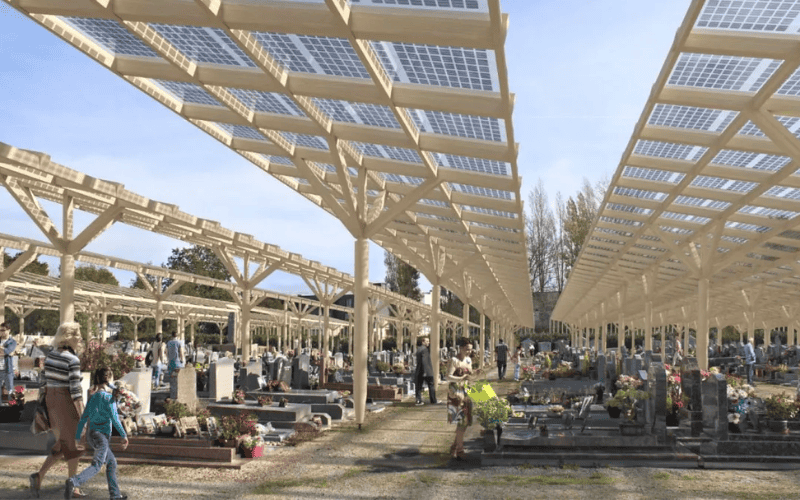
Is a Solar Canopy Right for My Site?
If you’re wondering whether a solar canopy would work for your site, you’re not alone. Not every location is suitable—but many are, often more than you’d expect. Here are a few key questions to help you decide:
- Do you have open, sun-exposed space?
Solar canopies perform best in areas with consistent sunlight and minimal shading. Parking lots, equipment yards, or open driveways are all great candidates. - Do you have significant daytime energy use?
Facilities with high power demand during daylight hours—like factories, offices, schools, or retail centers—can maximize on-site solar consumption and ROI. - Is your rooftop unavailable or limited?
If your building roof lacks the space, structural strength, or orientation for solar panels, a canopy gives you an alternative way to deploy clean energy. - Are you planning to add EV charging stations?
A canopy can physically support solar panels and shelter charging points at the same time—making it easier to expand EV infrastructure without using extra land. - Are there regulatory or permitting constraints in your region?
Some regions have fast-track approvals for solar carports or offer incentives for solar-plus-EV solutions. Checking local rules early helps avoid delays.
Even if you’re unsure about some of these factors, a quick site review from an experienced provider can help clarify what’s feasible. Often, the best opportunities are hiding in plain sight—right above the space you already own.
How Are Solar Canopies Built?
Building a solar canopy might sound complex, but with the right team and planning, the process is surprisingly straightforward. Most projects follow a clear, step-by-step approach—from early assessment to final connection—designed to minimize disruption to your daily operations.
It usually begins with a site evaluation. This step checks available space, sun exposure, soil or pavement conditions, and nearby electrical infrastructure. It helps determine the optimal size, orientation, and structure type for your canopy.
Next comes the design and engineering phase. Structural loads, wind and snow conditions, seismic zones, and local codes are all considered here. The steel structure is custom-designed to fit your space and meet all safety requirements. At the same time, the solar layout and electrical connections are planned in detail.
Once approvals and permits are secured, fabrication and delivery begin. Steel components are prefabricated off-site, reducing on-site noise and delays. When everything is ready, installation typically takes a few weeks, depending on the size of the system.
The actual construction process is usually fast and modular. Foundations are prepared, columns are anchored, beams and panels are mounted, and the system is connected to your energy network. In many cases, your parking lot or site remains partially open during the build.
Finally, the system is tested, inspected, and brought online. Some setups also include monitoring tools so you can track power production and performance in real time.
From start to finish, most commercial-scale projects take around 2 to 4 months, including design, permitting, and installation. With an experienced structural and solar team, your canopy can go from idea to energy without disrupting your business.
Related Reading:
What Materials Are Used in a Solar Canopy Structure?
A solar canopy may look simple from the outside, but what it’s made of plays a big role in how it performs over time—especially in harsh environments.
Most commercial solar canopies use structural steel as the main framing material. Steel offers excellent strength, flexibility in design, and long-term durability. It can handle heavy wind loads, snow, and even seismic activity when engineered correctly. Compared to aluminum, steel is generally better suited for larger spans and tougher industrial conditions.
To prevent corrosion, the steel is typically treated with a protective surface finish. This may include hot-dip galvanizing, powder coating, or a combination of both. These treatments create a barrier against rust, UV damage, and moisture—especially important for coastal or high-humidity regions.
As for the solar panels themselves, most canopies are designed to work with standard monocrystalline modules, known for their efficiency and reliability. In some cases, bifacial panels are used to capture reflected light from below, increasing total energy yield. The mounting system is carefully designed to secure the panels under wind and snow loads, while also allowing for drainage and thermal movement.
Other materials may include foundation components (concrete, anchors), cable trays, junction boxes, and optional additions like rain gutters or lighting fixtures—depending on your specific needs.
Ultimately, the right materials come down to the goals of your project and the demands of your site. A well-built canopy isn’t just about generating power—it’s about lasting performance, safety, and low maintenance over years of daily use.
How to Choose the Right Solar Canopy Provider?
Choosing the right provider can make or break your solar canopy project. This isn’t just about buying solar panels—it’s about getting a structure that works, lasts, and fits your site perfectly. That means both the steel canopy and the solar system must be carefully planned and coordinated, even if they come from different sources.
Here are a few key things to look for when evaluating providers:
- Structural expertise matters.
Solar canopies are exposed to wind, rain, seismic forces, and constant use. Make sure your provider has real experience in structural engineering—not just panel installation. - Custom design vs. cookie-cutter solutions.
Every site is different. A good provider will offer design flexibility, not just standard kits. That means adjusting layout, column spacing, height, and panel tilt to match your needs. - Integration capability.
Can the team handle coordination with your solar EPC or system designer? A reliable structure provider will ensure the canopy is fully compatible with your solar layout, loads, and wiring paths. - Quality assurance and certifications.
Look for companies that follow recognized standards (like ISO, CE, UL), and who can show proof of past projects. If they can’t show you what they’ve built, that’s a red flag. - Support beyond delivery.
A canopy is a long-term investment. You want someone who can offer ongoing structural support, maintenance guidance, and design adjustments when needed—not just supply steel and disappear.
If you’re sourcing the canopy separately, partner with a steel specialist who understands solar—someone who can get the engineering, loads, and fabrication right the first time.
That’s exactly where structure-focused providers like us add value: we don’t supply solar panels, but we make sure your canopy is strong, optimized, and fully solar-ready.
Conclusion
A solar canopy does more than generate electricity—it reshapes how your space works, how your business saves, and how your brand is perceived. It’s a structure that earns its keep every single day, turning overlooked areas like parking lots or open yards into visible proof of smart, sustainable investment.
In a world moving toward clean energy and efficient land use, solar canopies offer a rare combination of form, function, and financial return. They don’t just add panels—they add purpose to your property.
If you’re thinking about how to get more from the space you already have, it may be time to look up.
Work With a Team That Builds What Matters
A solar canopy isn’t just steel and bolts—it’s infrastructure. To get it right, you need a structure partner who understands solar applications, custom engineering, and on-the-ground realities.
With over 20 years of experience in steel structure manufacturing, SteelPRO PEB delivers solar-ready canopy structures that are strong, precise, and built to perform. We design and fabricate in-house using advanced tools and full visualized production—from raw material to final delivery. Every project includes free 2D and 3D drawings, fast lead times, and structural support when and where you need it.
Need help on-site? We’re with you. From remote video support to engineer dispatch, we make sure installation is smooth, safe, and efficient.
Explore our Solar Canopy Solutions to see what’s possible.
Then talk to us—we’ll help you build it right.

